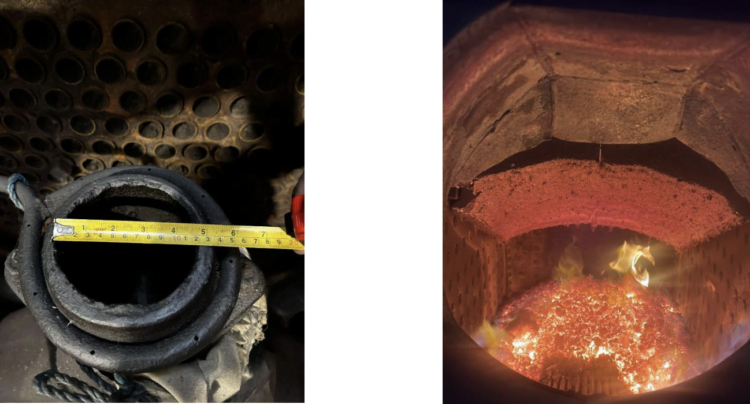The 563 Locomotive Group has sent season's greetings and an update to its supporters.
It has also given a summary of the progress it made during 2023, from before the loco's steam test in March to after its return to service in October.
The loco's return to service means that the 563 Locomotive Group is now focused on maintaining 563 rather than overhauling it. It is also formalising plans for the assessment of the National Railway Museum's LSWR T9 No 120, and hopes to launch the fundraising campaign for this next year.
563 will be in service at Swanage Railway's Winter Warm Up weekend on Saturday 6 and Sunday 7 January. This promises to be an exciting event, with a timetable that the Group describes “intense and varied”, including 563 hauling its first freight train since its return to service.
Tickets are available on the Swanage Railway website, with an early-bird discount on tickets bought before Sunday (31 December) getting an early bird discount.
When the Group planned the launch event in October, it had a provisional timetable that included around three months' time, which it planned to use for running in and fettling. Unfortunately, timescales slipped and 563 had only four days of loaded test running prior to the launch weekend and the services it ran over October half term.
Despite this, 563 performed well during the re-launch despite some minor niggles.
The overall steaming capacity of the locomotive needed attention and improvement. When a new loco is about to enter traffic, its steaming ability is assessed. 563's testers had never been on the loco before, but even so, the Group was expecting it to steam better than it did.
During its first period of operation, the Group's efforts did not result in a fully-effective method of getting it to steam reliably, so it was limited to three coaches during the first period so it could make it up the line without stopping for steam.
The Group's investigations identified some measures that were then taken:
- A new baffle plate for the firebox has been fabricated to better direct airflow in the firebox under the brick arch.
- The blower has been improved by reducing the size of the holes in the blower ring, enabling this to draw the fire better.

During the first period of operation, the draught on the fire was poor. The blast pipe assembly is a Drummond one (the Adams Vortex being removed around 1900). As the Group does not have a drawing for an Adams T3 Drummond Blast pipe, it compared it to those fitted on the Drummond T9 at Swanage, Adams Radial at the Bluebell Railway and the 02 on the Isle of Wight.
The Group also found references to the size of the blast pipe annularity in some of its archive material, which confirmed that the cap fitted that had an orifice that was around two-and-a-half inches too big – nearly 50% larger than it should be.
The Swanage Railway has a drawing and a pattern for a Drummond blast pipe cap, because this is the same one fitted to the M7. The Group ordered a new blank from Bridport Foundry and bored it to a suitable size. In early November, 563 hauled two dead class 33s in a test run. This is equivalent to about 6 BR Mk1 coaches in terms of rolling resistance and weight.
The test revealed that 563's performance has improved quite dramatically, and the fire reached white heat for the first time. The Group is hopeful that the smokey videos of 563 will start to become a thing of the past.
This was just one test, and there are more improvements to make to 563, but the Group is increasingly confident that the locomotive will be able to meet the demands of the Swanage branch.
The Group is looking for a financial sponsor for the new blast pipe cap, which cost £700 to be cast, machined and fitted. Treasurer Steve Doughty would be delighted to hear from potential sponsors.
The Group has also decided to remove the piston tail rods for the time being. The rods were fitted to the locomotive during its 1960 overhaul at Eastleigh, have not been used in service, have been difficult to maintain and lubricate, and have provided little benefit at 25mph. The rods can be removed quite cheaply, and the piston covers will be plugged. This will also means that 563's new livery will be more authentic, as these tail rods were removed by the time the T3s were painted into Drummond Livery.
Well done the 563 crew, you deserve a Happy New Year, hope I can get down to see your work in action soon.